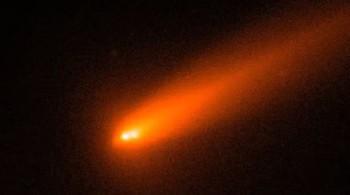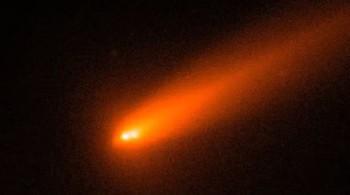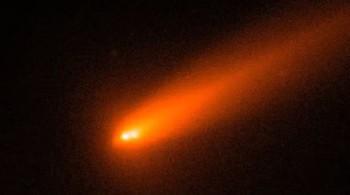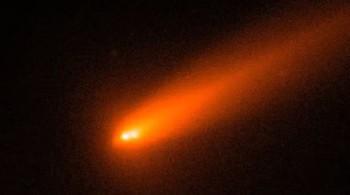
Comet C/2025 K1 (ATLAS) breaks into 3 after coming close to Sun
In a fascinating and rare astronomical event, Comet C/2025 K1 (ATLAS) has broken into three pieces after swinging too close to the Sun. This extraordinary occurrence has left astronomers and space enthusiasts alike in awe, as it provides a unique opportunity to study the composition and behavior of comets. The comet’s breakup was captured using Italy’s Copernicus telescope, offering a stunning visual representation of this celestial phenomenon.
Comet C/2025 K1 (ATLAS) was first discovered in May 2025 by the ATLAS (Asteroid Terrestrial-impact Last Alert System) survey, a robotic astronomical survey system designed to detect near-Earth asteroids and comets. Initially, the comet was expected to be a relatively small and unremarkable object, but as it approached the Sun, its behavior became more interesting. On October 8, the comet passed close to the Sun, and as it did, its nucleus became unstable, ultimately leading to its breakup into three distinct pieces.
The two larger chunks of the comet have drifted approximately 2,000 kilometers apart from each other, with a smaller third piece visible to the left of the pair. This separation is a result of the comet’s fragile composition, which was unable to withstand the intense heat and gravitational forces exerted by the Sun. As the comet approached the Sun, the Sun’s radiation and gravitational pull caused the comet’s ices to vaporize, leading to a buildup of pressure that eventually led to the comet’s fragmentation.
The breakup of Comet C/2025 K1 (ATLAS) is not an unprecedented event, as comets are known to be fragile and prone to fragmentation. However, the opportunity to observe this process up close and in real-time is rare, making this event a significant one for astronomers. By studying the comet’s breakup, scientists can gain valuable insights into the composition and structure of comets, which can help us better understand the formation and evolution of our solar system.
The use of Italy’s Copernicus telescope to capture the comet’s breakup has provided astronomers with a unique dataset, allowing them to study the comet’s behavior in unprecedented detail. The telescope’s high-resolution images have enabled scientists to track the comet’s movements and study its composition, shedding light on the processes that govern the behavior of comets.
The study of comets like C/2025 K1 (ATLAS) is essential for understanding the early history of our solar system. Comets are thought to be remnants from the formation of the solar system, and their composition can provide clues about the conditions and processes that existed during this period. By analyzing the comet’s breakup and studying its fragments, scientists can gain a better understanding of the solar system’s early evolution and the role that comets played in shaping the planets and other celestial bodies.
In addition to its scientific significance, the breakup of Comet C/2025 K1 (ATLAS) is also a reminder of the awe-inspiring beauty of the universe. The stunning images captured by the Copernicus telescope offer a glimpse into the dynamic and ever-changing nature of the cosmos, highlighting the complexity and fragility of celestial objects like comets.
As astronomers continue to study the fragments of Comet C/2025 K1 (ATLAS), they will undoubtedly uncover new insights into the behavior and composition of comets. This event serves as a reminder of the importance of continued exploration and study of our solar system, as there is still much to be learned about the celestial bodies that inhabit it.
In conclusion, the breakup of Comet C/2025 K1 (ATLAS) is a significant event that offers a unique opportunity for scientists to study the composition and behavior of comets. The use of Italy’s Copernicus telescope to capture the comet’s breakup has provided a valuable dataset, allowing astronomers to gain a better understanding of the processes that govern the behavior of comets. As we continue to explore and study the solar system, events like this remind us of the awe-inspiring beauty and complexity of the universe, and the importance of continued scientific inquiry and discovery.




